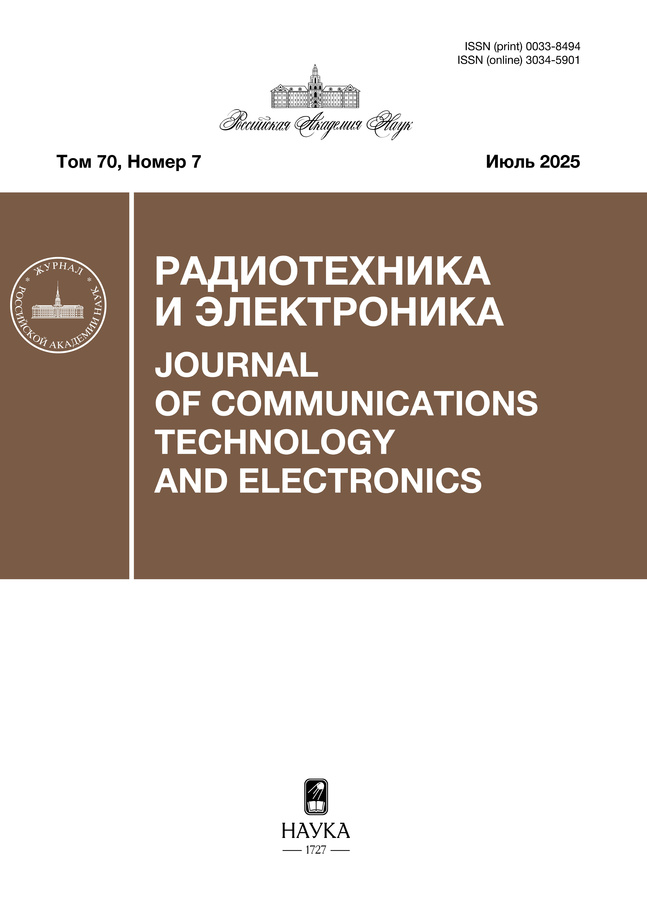Magneto-optical properties of the BiIG/GGG/SiO2 heterostructure around the magnetic compensation point
- Autores: Fedorov A.S.1,2, Nikitov S.A.1,2, Logunov M.V.1,2,3
-
Afiliações:
- Kotelnikov Institute of Radioengineering and Electronics RAS
- Moscow Institute of Physics and Technology (National Research University)
- National Research University Higher School of Economics
- Edição: Volume 70, Nº 7 (2025)
- Páginas: 695-699
- Seção: НАНОЭЛЕКТРОНИКА
- URL: https://cardiosomatics.ru/0033-8494/article/view/692014
- DOI: https://doi.org/10.7868/S3034590125070097
- ID: 692014
Citar
Texto integral
Resumo
Sobre autores
A. Fedorov
Kotelnikov Institute of Radioengineering and Electronics RAS; Moscow Institute of Physics and Technology (National Research University)
Email: fedorov_a_s@inbox.ru
Mokhovaya Str., 11, bld. 7, Moscow, 125009 Russian Federation; Institutskiy per., 9, Dolgoprudny, Moscow Region, 141700 Russian Federation
S. Nikitov
Kotelnikov Institute of Radioengineering and Electronics RAS; Moscow Institute of Physics and Technology (National Research University)Mokhovaya Str., 11, bld. 7, Moscow, 125009 Russian Federation; Institutskiy per., 9, Dolgoprudny, Moscow Region, 141700 Russian Federation
M. Logunov
Kotelnikov Institute of Radioengineering and Electronics RAS; Moscow Institute of Physics and Technology (National Research University); National Research University Higher School of EconomicsMokhovaya Str., 11, bld. 7, Moscow, 125009 Russian Federation; Institutskiy per., 9, Dolgoprudny, Moscow Region, 141700 Russian Federation; Pokrovsky Boulevard, 11, Moscow, 109028 Russian Federation
Bibliografia
- Zvezdin A.K., Kotov V.A. Modern Magnetooptics and Magnetooptical Materials. Bristol: Inst. Phys. Publ., 1997.
- Deb M., Popova E., Fouchet A., Keller N. // J. Phys. D: Appl. Phys. 2012. V. 45. № 45. P. 455001.
- Levy M., Borovkova O.V., Sheidler C., et al. // Optica. 2019. V. 6. № 5. P. 642.
- Bi L., Hu J., Jiang P., et al. // Materials. 2013. V. 6. № 11. P. 5094.
- Pintus P., Ranzani L., Pinna S., et al. // Nature Electronics. 2022. V. 5. № 9. P. 604.
- Adachi N., Denysenkov V.P., Khartsev S.I. et al. // J. Appl. Phys. 2000. V. 88. № 5. P. 2734.
- Levy M., Chakravarty A., Huang H.-C., Osgood R.M. // Appl. Phys. Lett. 2015. V. 107. № 1. P. 011104.
- Балабанов Д.Е., Котов В.А., Шавров В.Г. и др. // РЭ. 2017. Т. 62. № 1. С. 70.
- Zhang T., Yang Y., Wu D., et al. // Optical Materials Express. 2024. V. 14. № 3. P. 767.
- Lutsev L.V., Dubovoy V.A., Stognij A.I. et al. // J. Appl. Phys. 2020. V. 127. № 18. P. 183903.
- Sharko S.A., Serokurova A.I., Novitskii N.N. et al. // Ceramics. 2023. V. 6. P. 1415–1433.
- Logunov M.V., Safonov S.S., Fedorov A.S., et al. // Phys. Rev. Appl. 2021. V. 15. № 6. P. 064024.
- Kim S.K., Beach G.S.D., Lee K.-J., et al. // Nature Materials. 2022. V. 21. № 1. P. 24.
- Дровосеков А.Б., Холин Д.И., Крейнес Н.М. // Письма в ЖЭТФ. 2020. Т. 131. № 1. С. 149.
- Zhang T., Yang Y., Wu D. et al. // Optical Materials Express. 2024. V. 14. № 3. P. 767.
- Dionne. G.F. Magnetic Oxides. Boston: Springer US, 2009.
- Dionne G.F., Allen G.A. // J. Appl. Phys. 1993. V. 73. № 10. P. 6127.
- Levallois J., Nedoliuk I.O., Crassee I., Kuzmenko A.B. // Rev. Scientific Instruments. 2015. V. 86. № 3. P. 033906.
- Ветошко П.М., Бержанский В.Н., Полулях С.Н. и др. // РЭ. 2023. Т. 68. № 4. С. 391.
Arquivos suplementares










